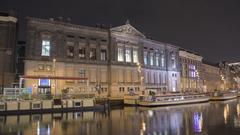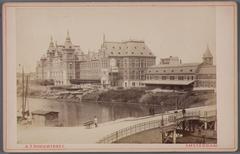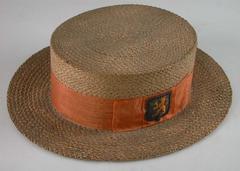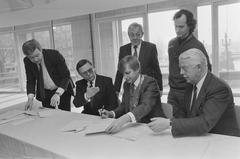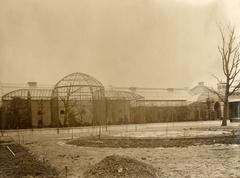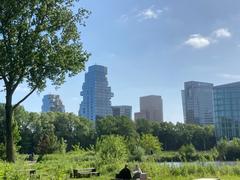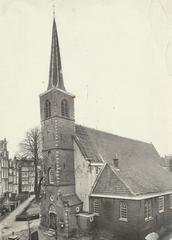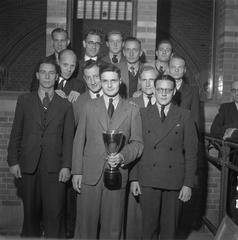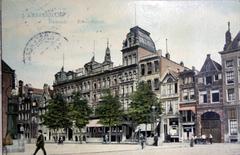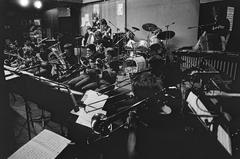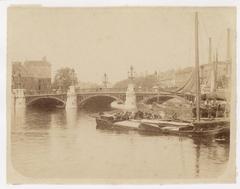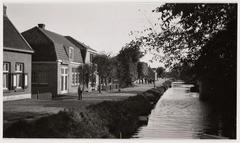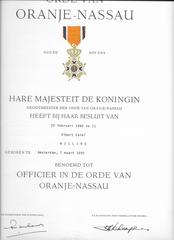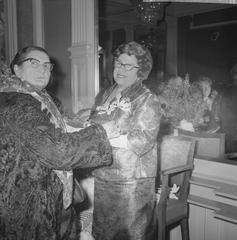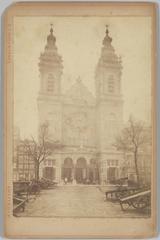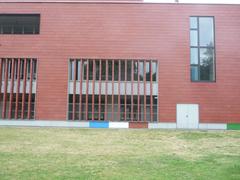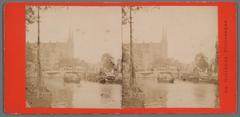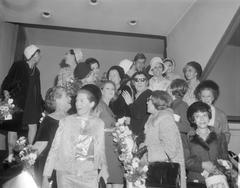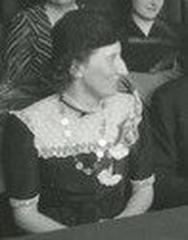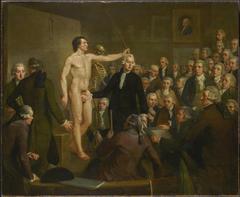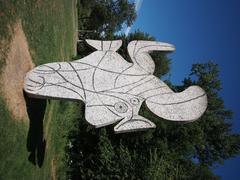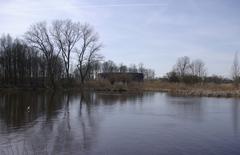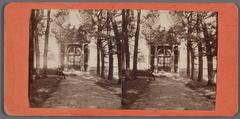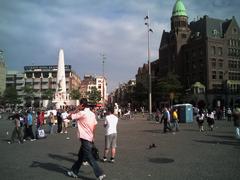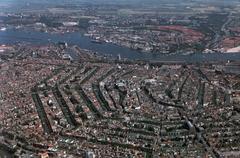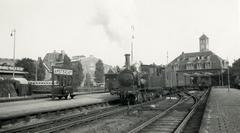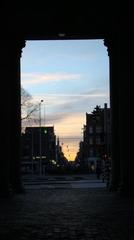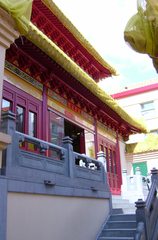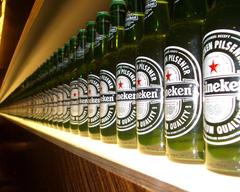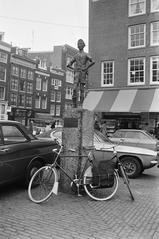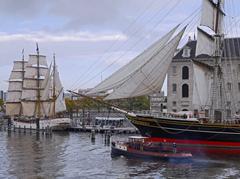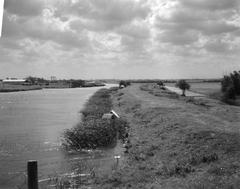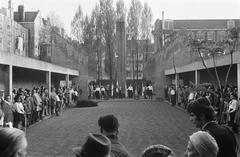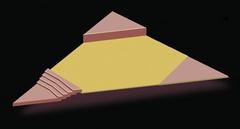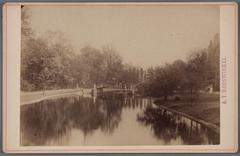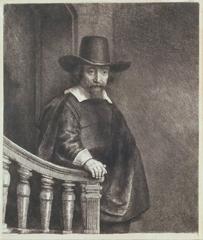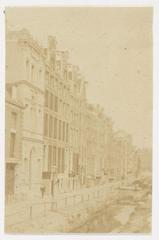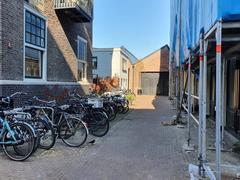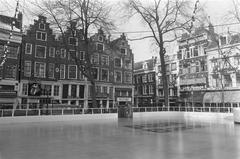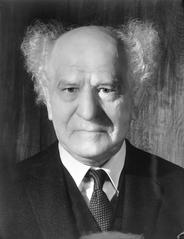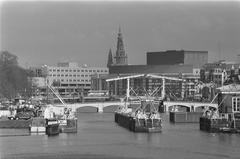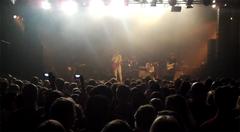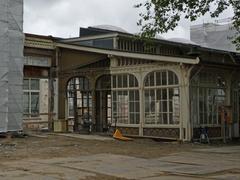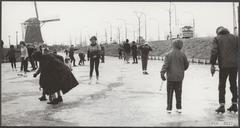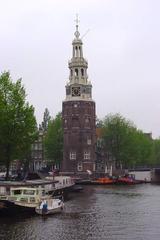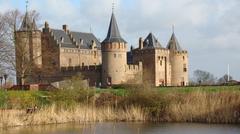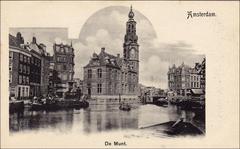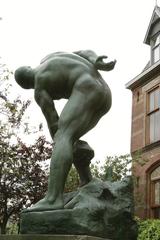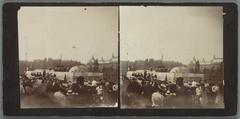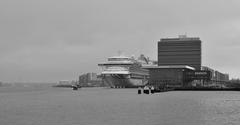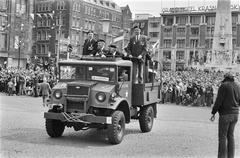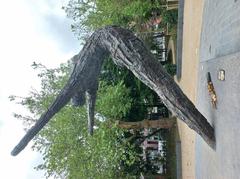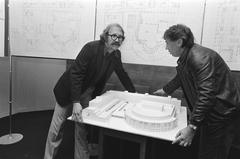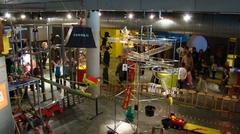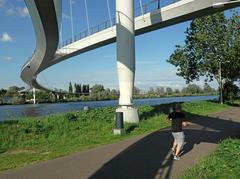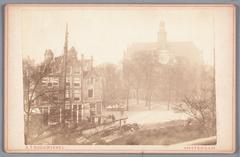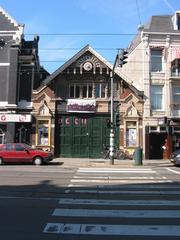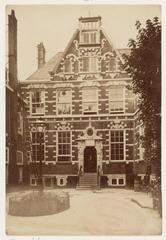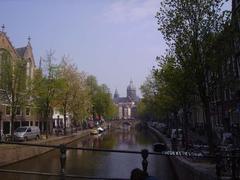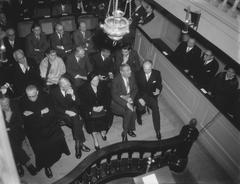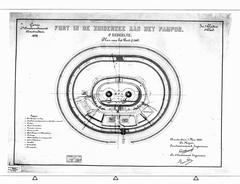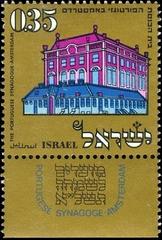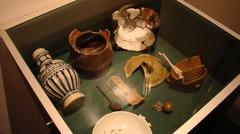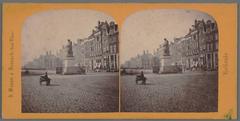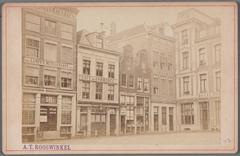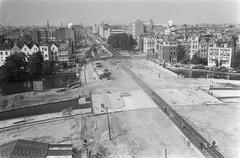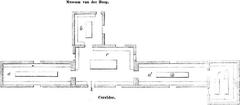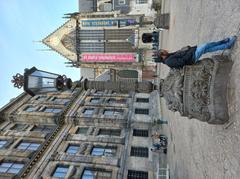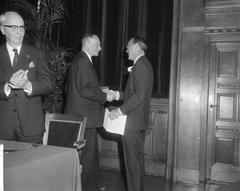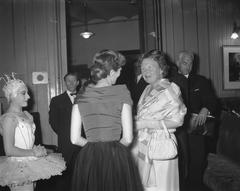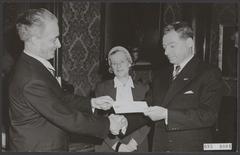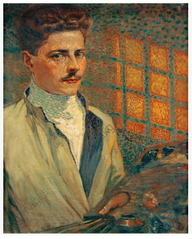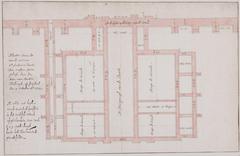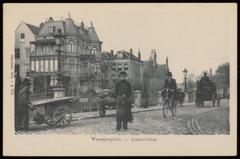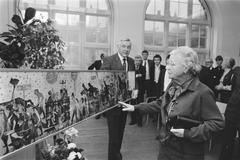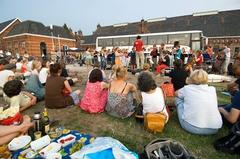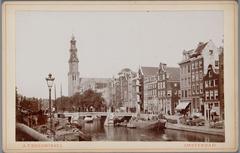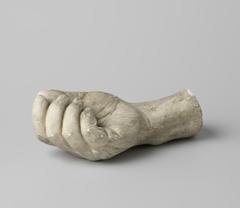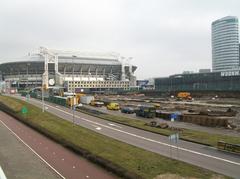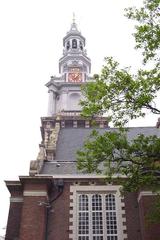
Vondelbrug Amsterdam: Visiting Hours, Tickets, and Historical Sites Guide
Date: 03/07/2025
Introduction: History and Cultural Significance
Situated at the heart of Amsterdam, the Vondelbrug is an architectural and cultural landmark that elegantly connects the neighborhoods of Oud-West and Oud-Zuid as it spans the iconic Vondelpark. Much more than a practical crossing, the bridge embodies Amsterdam’s resilience and creativity, having been designed in the Amsterdam School style by Piet Kramer and adorned with sculptures by Hildo Krop. Conceived in the late 19th century and completed after World War II, Vondelbrug is a testament to the city’s ongoing efforts to unify its green spaces and urban districts.
The bridge’s intricate stonework, terraced flower boxes, and octagonal viewing platform offer sweeping vistas of both park and city, drawing architecture lovers, history enthusiasts, and casual visitors alike. Its enduring presence in the urban landscape makes it a lively social hub and a gateway to some of Amsterdam’s best attractions, including the Van Gogh Museum, Rijksmuseum, and the bustling Leidseplein. Beneath the bridge, the Vondelbunker—a former atomic shelter—adds a contemporary twist, hosting underground art and music events that further enrich the site’s cultural tapestry.
For the most current information on events, accessibility, and tours, visitors should consult the I amsterdam tourism website and local guides.
Table of Contents
- Introduction: History and Significance
- Historical Background and Development
- Architectural Features and Artistic Details
- Visiting Information
- The Vondelbunker: Social and Cultural Venue
- Markings and Commemorative Elements
- Plan Your Visit: Tips and Resources
- FAQs
- References
Historical Background
The Vondelbrug’s origins date back to Amsterdam’s late 19th and early 20th-century urban expansion. When Vondelpark opened in 1865, it created a natural barrier between neighborhoods, prompting the need for a bridge to connect them. Initial proposals in 1891 met resistance, delaying construction until 1939. The renowned architect Piet Kramer, known for his Amsterdam School designs, began work that was later interrupted by World War II. The bridge was finally opened in 1947, symbolizing both recovery and artistic ambition in post-war Amsterdam.
Architectural Features and Artistic Details
Vondelbrug is a celebrated example of the Amsterdam School style, characterized by expressive brickwork, sculptural reliefs, and organic forms. Kramer’s design is enriched by Hildo Krop’s stone carvings, which reference Joost van den Vondel, the bridge’s namesake and a legendary Dutch poet. The structure features a distinctive octagonal viewing platform, flower boxes, and original tilework, making it a visual highlight within Vondelpark. The bridge supports pedestrians, cyclists, and trams, reinforcing Amsterdam’s commitment to accessible, multi-modal urban spaces.
Visiting Information
Location and Directions
- Address: Spans Vondelpark, connecting Eerste Constantijn Huygensstraat (Oud-West) and Van Baerlestraat (Oud-Zuid).
- By Tram: Lines 1, 2, 3, and 12 stop nearby.
- By Bike: Amsterdam’s extensive cycling infrastructure makes the bridge easily accessible.
- By Foot: Short walk from Museumplein, Leidseplein, and other city landmarks.
Visiting Hours
- Vondelbrug: Open to the public 24/7.
- Vondelpark: Open daily from 6:00 AM to 1:00 AM.
Tickets & Admission
- Free: No entrance fee for the bridge or Vondelpark.
- Special Events: Some events in Vondelpark may require tickets.
Accessibility
- Smooth, gently sloping paths make the bridge and surrounding park wheelchair and stroller accessible.
- Vondelbunker access is limited due to stairs and narrow entrances.
Photography Tips
- Early mornings and late afternoons offer the best lighting and fewer crowds.
- The octagonal viewing platform provides excellent vantage points for cityscape and park photography.
Nearby Attractions
- Vondelpark: Amsterdam’s largest city park, featuring playgrounds, gardens, and open-air theatre.
- Museum District: Home to the Van Gogh Museum, Rijksmuseum, and Stedelijk Museum.
- Dining: Numerous cafés and restaurants on Van Baerlestraat and Overtoom.
Special Events
- Vondelpark Open Air Theatre: Free performances during summer weekends.
- Vondelbunker: Occasional art, music, and cultural events—check official listings for dates.
The Vondelbunker: Culture Beneath the Bridge
Hidden beneath the northeast end of Vondelbrug is the Vondelbunker, a Cold War-era atomic shelter turned underground cultural venue. Since the late 1960s, it has played host to everything from countercultural gatherings to contemporary art and music events, highlighting Amsterdam’s creative spirit and layered history.
Markings and Commemorative Elements
Look for commemorative inscriptions, like “Vondelbrug” carved in natural stone and year stones marked “Anno 1940,” reflecting the bridge’s intended completion date. Sculptural reliefs by Kramer and Krop enrich the stairways and platforms, offering historical context and artistic intrigue.
Plan Your Visit: Tips and Resources
- Best Times: Early morning or late afternoon for tranquility and great photos.
- Weather: Pack a rain jacket; weather can be unpredictable.
- Transport: Use a GVB day ticket or I amsterdam City Card for convenience and discounts.
- Etiquette: Respect cyclists, keep noise low, and use bins to keep the park clean.
- Accessibility: Most paths are wheelchair-friendly, but check event venues for specific access details.
For maps, guided tours, and event alerts, download the Audiala app.
Frequently Asked Questions (FAQs)
What are the Vondelbrug’s opening hours?
The bridge is open 24/7, and Vondelpark is open daily from 6:00 AM to 1:00 AM.
Is there an entrance fee?
No, access to the Vondelbrug and Vondelpark is free.
Is the bridge wheelchair accessible?
Yes, the bridge and most surrounding paths are accessible.
How do I get there by public transport?
Tram lines 1, 2, 3, and 12 stop near the bridge.
Are there guided tours?
Yes, local operators offer walking and cycling tours that include the bridge and surrounding attractions.
Summary and Final Tips
The Vondelbrug stands as a symbol of Amsterdam’s blend of heritage, art, and community. Its distinctive architecture, free access, and central location make it a natural starting point for exploring the city’s green spaces and cultural highlights. Early or late visits provide the most peaceful experiences, while special events and guided tours offer deeper historical and artistic insights. The bridge’s ongoing role in community life—enhanced by the Vondelbunker’s unique programming—ensures it remains a vital and living landmark.
For the most up-to-date information on events, accessibility, and audio tours, consult the I amsterdam tourism website and the Audiala app. Embrace the chance to experience one of Amsterdam’s most beloved and storied bridges—a place where history and modern city life truly meet.
References
- Visiting the Vondelbrug in Amsterdam: History, Architecture, and Visitor Information, 2025, I amsterdam (https://www.iamsterdam.com/en/see-and-do/locations/vondelpark)
- Vondelbrug Amsterdam: Visiting Hours, Tickets, and Cultural Highlights of this Historic Bridge, 2025, I amsterdam (https://www.iamsterdam.com/en/see-and-do/attractions-and-sights/amsterdams-architectural-style)
- Vondelbrug Visiting Guide: Hours, Tickets, and Tips for Exploring Amsterdam’s Historic Bridge, 2025, Touristplaces.guide (https://touristplaces.guide/how-to-travel-in-amsterdam-as-a-tourist/)
- Practical Tips for Tourists: Visiting Vondelbrug, 2025, Amsterdam.info (https://www.amsterdam.info/parks/vondelpark/)









